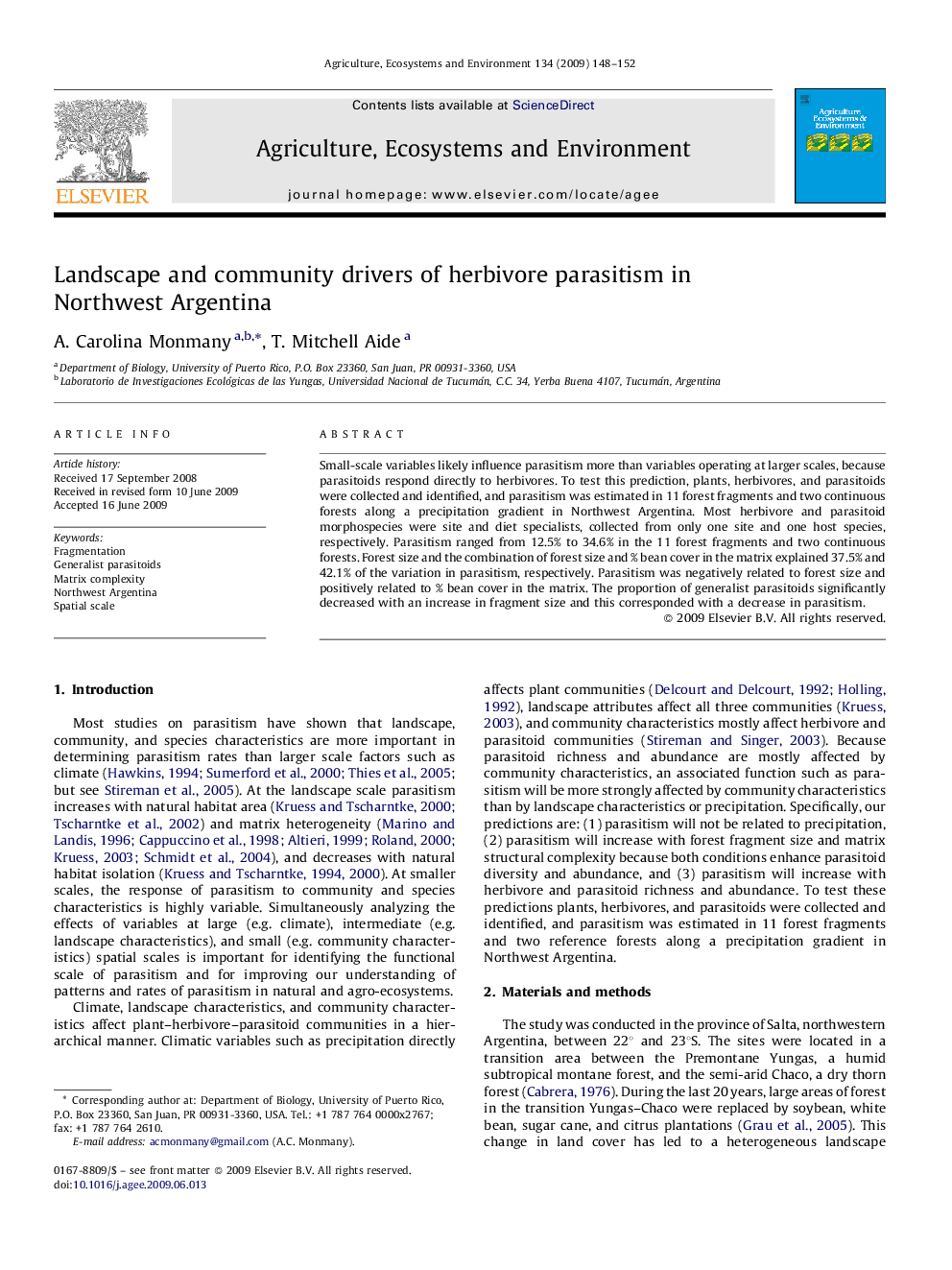| Article ID | Journal | Published Year | Pages | File Type |
|---|---|---|---|---|
| 2415255 | Agriculture, Ecosystems & Environment | 2009 | 5 Pages |
Small-scale variables likely influence parasitism more than variables operating at larger scales, because parasitoids respond directly to herbivores. To test this prediction, plants, herbivores, and parasitoids were collected and identified, and parasitism was estimated in 11 forest fragments and two continuous forests along a precipitation gradient in Northwest Argentina. Most herbivore and parasitoid morphospecies were site and diet specialists, collected from only one site and one host species, respectively. Parasitism ranged from 12.5% to 34.6% in the 11 forest fragments and two continuous forests. Forest size and the combination of forest size and % bean cover in the matrix explained 37.5% and 42.1% of the variation in parasitism, respectively. Parasitism was negatively related to forest size and positively related to % bean cover in the matrix. The proportion of generalist parasitoids significantly decreased with an increase in fragment size and this corresponded with a decrease in parasitism.
